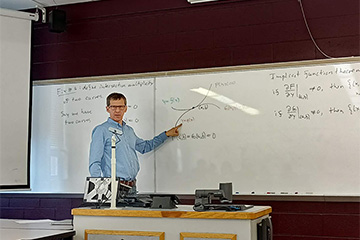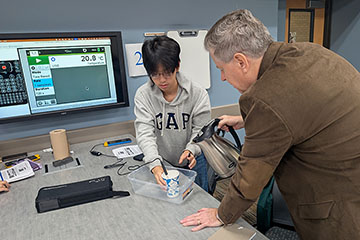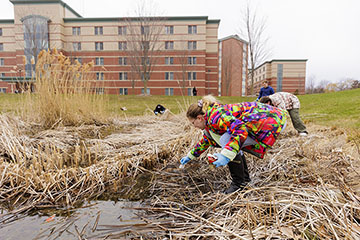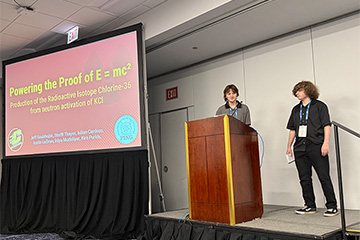MITTEN-CI project unravels dynamics of thunderstorm formation in western Michigan
A groundbreaking research initiative known as MITTEN-CI, short for Maritime to Inland Transitions Towards ENvironments for Convection Initiation, is set to shed light on the intricate mechanisms behind thunderstorm formation in Western Michigan. Spearheaded by a team of distinguished scientists from Central Michigan University, the University of Illinois, Texas Tech, CU Boulder, and the University of Nebraska-Lincoln, the project has secured funding from the National Science Foundation's Physical and Dynamic Meteorology program.
At the heart of MITTEN-CI lies a quest to unravel the influence of Lake Michigan on moisture, instability, and lift, which are the key ingredients for thunderstorm development. CMU’s Dr. Jason Keeler, the lead investigator, explains that the project's acronym encapsulates its core mission: understanding how the transition from maritime to inland environments can lead to convection initiation, the technical term for thunderstorm development.
The unique geography of Western Michigan, shaped by the vast expanse of Lake Michigan, plays a pivotal role in this process. As air masses traverse the lake, they undergo significant changes in temperature, humidity, and wind. During summer months, the lake's cooling effect stabilizes the atmosphere, inhibiting thunderstorm formation. However, as these air masses transition back over land, they undergo destabilization, priming them for thunderstorm development.
A key focus of MITTEN-CI is an examination of the role of lake breezes in facilitating lift, a critical ingredient for thunderstorm initiation. The leading edge of onshore flow associated with the lake breeze is known as the lake-breeze front, which acts as a mini cold front, aiding air masses in overcoming resistance to vertical motion. By studying the structure of these fronts under varying weather conditions, the research team aims to pinpoint their impact on thunderstorm development.
The project’s fieldwork, slated for July, will result in an extensive dataset that characterizes the evolution of temperature, humidity, wind, and development of thunderstorms using Uncrewed Aircraft Systems (UAS, a.k.a. drones), over 600 weather balloon launches, two Mobile Mesonets, two mobile radars, a Doppler LiDAR, and six weather stations that will measure transfer of heat from the ground to the atmosphere. The configuration of this diverse suite of instruments along a transect between the Holland/Saugatuck area and northern Eaton County will allow the researchers to elucidate the relationship between atmospheric conditions, destabilization, and thunderstorm occurrence.
MITTEN-CI not only promises to advance scientific understanding but also serves as a training ground for budding meteorologists. With 13 undergraduate students, 8 graduate students, and a postdoctoral researcher actively engaged in fieldwork, the project underscores a commitment to mentorship and professional development. Notably, Central Michigan University's Meteorology Majors will contribute significantly to the research endeavor.
Reflecting on the project's origins, Dr. Jason Keeler recalls its inception over a decade ago during a visit to Michigan. Collaborating with Dr. David Kristovich from the University of Illinois, the groundwork for MITTEN-CI was laid through a series of smaller campaigns that allowed them to test and improve instrument configuration. Over the years, the project evolved, culminating in a comprehensive effort to explore thunderstorm dynamics in Western Michigan.
Following the fieldwork, MITTEN-CI's extensive dataset will be meticulously analyzed over the ensuing years. The findings will be disseminated through conferences, peer-reviewed journals, and outreach initiatives, ensuring broader accessibility to the scientific community. Moreover, the publicly available data will serve as a valuable resource for future research endeavors, extending the project's impact far beyond its conclusion.
Through collaborative research and mentorship, MITTEN-CI aims to make significant contributions to society’s understanding of thunderstorm formation in coastal regions, offering invaluable insights for meteorologists and scientists worldwide.




